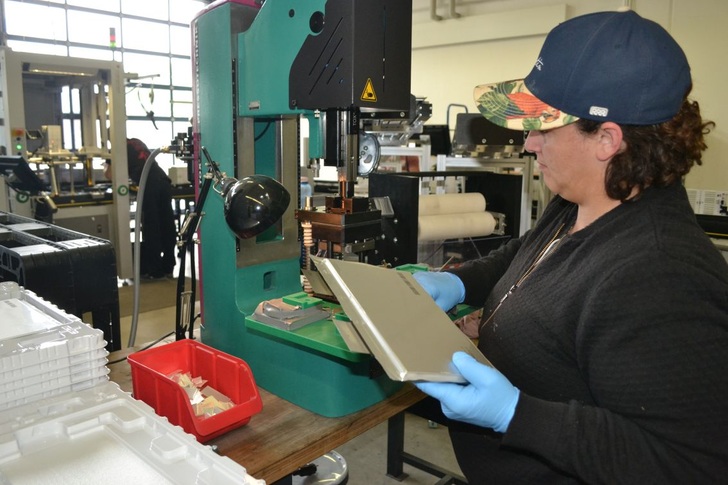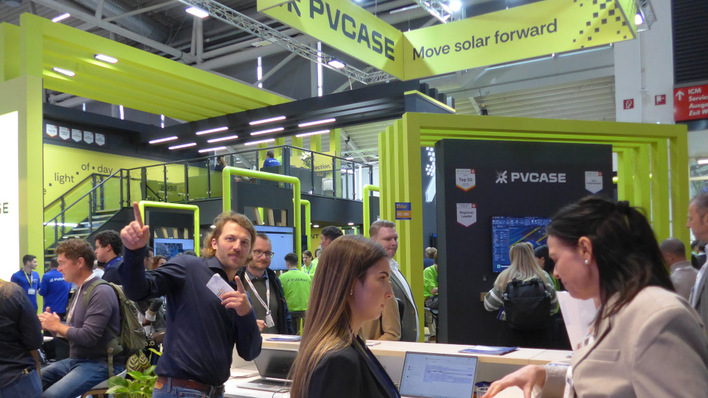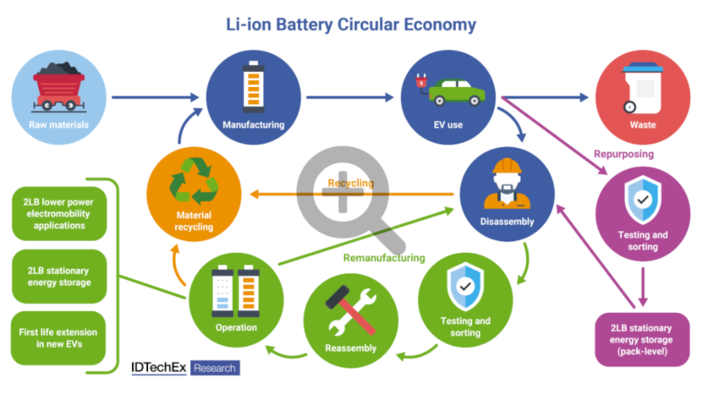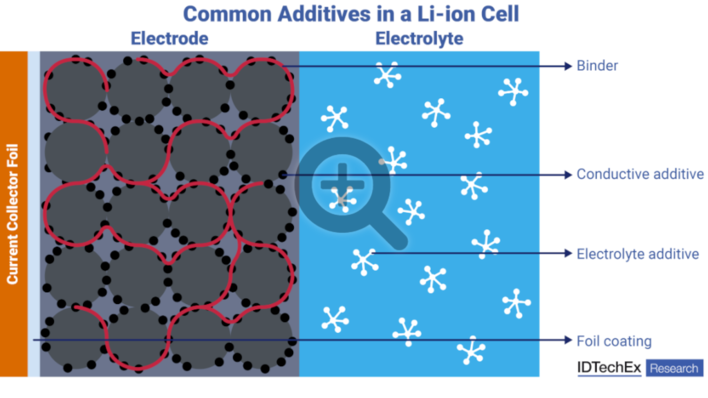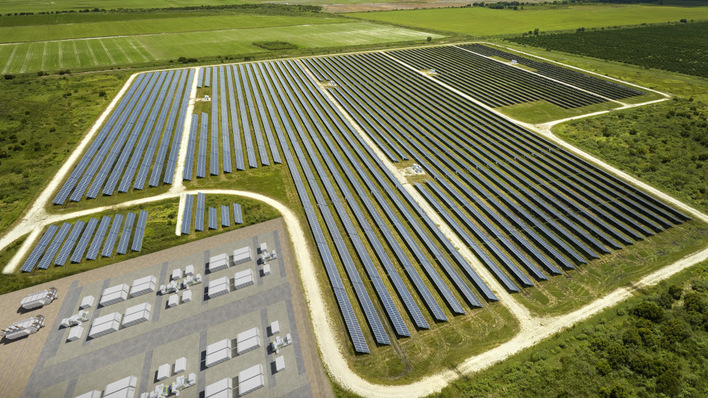Last year, Solarwatt presented the new solar battery MyReserve, with which it won first prize at the EES in Munich. Their stall at the trade fair was pretty much overrun by interested representatives of installation companies. They received almost 4,000 enquiries that needed to be processed – and production had not yet been implemented.
The storage segment is turning over quite rapidly; after the trade fair is before the trade fair. As of June last year, Solarwatt has established their battery factory, now the storage modules are coming off the production line at a rate of one every eight minutes. “Currently we are selling two battery modules per storage unit, together that is 4.4 kilowatt hours,” Andreas Gutsch explains. About 400 units per month are now leaving the factory. Backlogs and long delivery times are a thing of the past.
A new factory in Frechen near Cologne
The Dresden-based system provider took over the company E-Wolf in Frechen near Cologne, where now the Korean-built lithium cells are put together with the case and the circuit board to form the complete battery module.
Every module can contain up to 2.2 kilowatt hours, and a MyReserve can currently manage up to 8.8 kilowatt hours – i.e. four modules. Classified as dangerous goods, the battery modules are shipped separately from Frechen directly to installation company. The battery system’s case, cables and power electronics components are shipped to the construction site directly from Dresden, where system integration is located.
The company E-Wolf, which was since taken over by Solarwatt, was instrumental in creating the MyReserve which they are now also building for the energy giant E.ON. E-Wolf was originally conceived as a small but excellent builder of EVs.
Unique experience in motorsports
It was established by Toyota engineers after the Japanese manufacturer dropped out of Formula 1 and phased out their motorsports division. There they gathered a unique set of competencies on batteries, electric drive, the integration into Can Bus and the safety of electric systems. Also, E-Wolf has been involved with lithium batteries from the very beginning. Another set of experiences that Solarwatt were able to utilise.
Spare the batteries as much as possible
In 2013, Solarwatt commissioned E-Wolf with the development of a scalable 2.2 kilowatt hour battery module. This is what gave birth to the MyReserve: The battery management system (BMS) and operating strategy work very quickly, at millisecond intervals and with a step response time of 0.7 seconds. “The power electronics are very inexpensive compared to batteries,” Andreas Gutsch, head of a team of almost 20 people, remarks. “For this reason, the battery will retain its value for longer. Control and BMS are optimised to allow the battery to be used for as long as possible.”
Lithium cells are still expensive, so a large part of the value added is in the battery module. It is basically the same as in photovoltaics, where the crystalline solar cells make up about 80 percent of the value added. Solarwatt uses cells by SK with a separator made of ceramics, which significantly reduces the risk of short circuits from lithium depositions (dendrites).
If the battery gets weak, customer gets full replacement
Solarwatt grants a ten-year warranty for 80 percent of nominal capacity. If the capacity falls below that value, they offer a full replacement.
The MyReserve also switches off automatically when the residual capacity falls below 80 percent. “At this point the battery has reached the end of its service life,” Andreas Gutsch explains. “Below 80 percent, dendrites begin to grow much faster, even though one may not be able to see that form the outside.”
20,000 battery modules per year
Since last autumn, a factory was built in Frechen, where the batteries for the home power plant are to be assembled. The cells will be built by the chemical company SK in Korea. All other parts – about 1.000 components and subassemblies – are from Germany. As well as setting up production, the last few months were about qualifying the external suppliers.
Simply building a single prototype is something entirely different than going into mass production. Currently, the Frechen factory is run in partially-automated assembly mode in a single-shift system. That way it can assemble up to 20,000 battery modules per year, which is equivalent to about 10,000 storage units.
Twelve slim cells in one module
12 slim lithium cells are each wired together in series. Each cell is tested, and the module itself also undergoes a series of tests: voltage, safety, temperature, charge. In the end, the cell stacks are sealed in a housing of 13-millimetre-thick aluminium, which protects the battery from external shocks.
Also, the cells do not come in contact with oxygen, which can be crucial in case of a fire. The battery module weighs 24.5 kilograms, and thus is light enough to be lifted and installed by one person alone. All the technician has to do is connect a cable harness to the storage electronics (DC poles and control cable) – and that’s it.
Superfast control system needed
Installing the storage unit may be simple – the technology behind it certainly is not. The efficiency of the battery is an integral part of its control system. And this comes down to more than service life and the protection from critical operating conditions. It is about how fast the battery reacts to load requirements from the house or surplus electricity from the solar array.
In addition to the MyReserve, Solarwatt has developed an ACS sensor, which is mounted to the house’s consumption metre and signals as soon as the house is about to draw electricity from the grid. This sensor needs to be extremely fast, otherwise the signal takes too long to get from it to the control system of the storage unit. “It is our goal to keep the consumption metre at zero,” Andreas Gutsch says, explaining the company’s strategy. “The owner of the storage unit is supposed to draw as little power from the grid as possible.”
The ACS sensor gives the speed
Solarwatt’s fast sensor and their very fast control electronics come together to form a system that can react within 0.7 seconds. “We could be even faster, but that would not fit the cycles of the electrical equipment in the house.”
Something that most customers – and also installation companies – do not know: Dish washers, induction cookers, coffee machines or freezers do not continuously draw the power they need from the domestic power supply, but do so in one-second – or shorter – intervals. The fan of a blow dryer runs continuously, but its heating coils are energised in short bursts. A coffee machine on standby also heats up the water inside it for a second and then switches off, heats it up again and so on.
Control systems that are too slow will result in the storage unit not recognising and practically overlooking such consumers. About 30 to 40 percent of the electric equipment in a residential building are operated by two-point control, i.e. turn themselves on and off at certain intervals. If the storage unit cannot cope with that, it will only insufficiently raise the proportion of the self-consumed electricity.
The inverter’s tricks
The tricks that solar inverter manufacturers use to increase the yield of their components are even more sophisticated. SMA or Steca automatically recognise partial shading and react by running a short-term test cycle – known in the trade as ‘crazy Ivan’. The MPP tracker falls to zero voltage in 500 milliseconds and then oscillates back up to string voltage.
As the MyReserve is mounted to the MPP tracker on the DC side of the solar string, it has to go along with this loop. “Our electronics react in real time,” Andreas Gutsch says. “Otherwise, the inverter would switch itself off.”
Higher voltages of up to 800 volts
Until now, the voltage range of the MyReserve was limited to 600 volts. This has been a headache for quite a few technicians: On the day of installation there might be good weather and warm conditions, and so the solar string produces 580 volts – all is well.
But if the outside temperatures come down, that effects and increases the voltage that the string produces – solar cells like to be cool. Now the voltage might be at 602 volts and the storage unit shuts down to protect against voltage spikes. “We are in the process of certifying the new MyReserve capable of handling 800 volts at the DC input,” Gutsch promises. “But we will keep it in the low-voltage range. There is no plan to go over 1,000 volts.” (Heiko Schwarzburger and Sven Ullrich)
This could also be usefull for you:
Solarwatt is entering the UK market for energy self-consumption with partner network
8 expert tips for solar energy storage every home builder should know about


